Image Archive

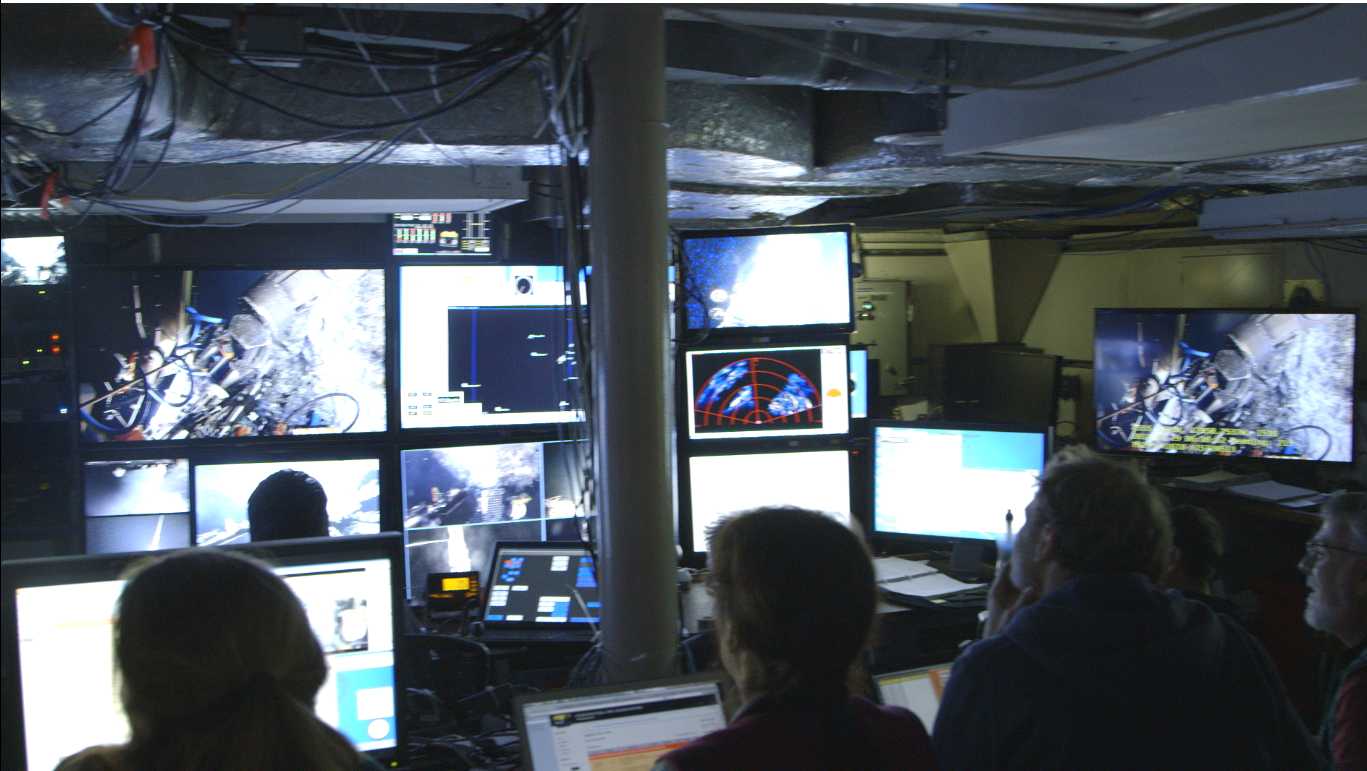
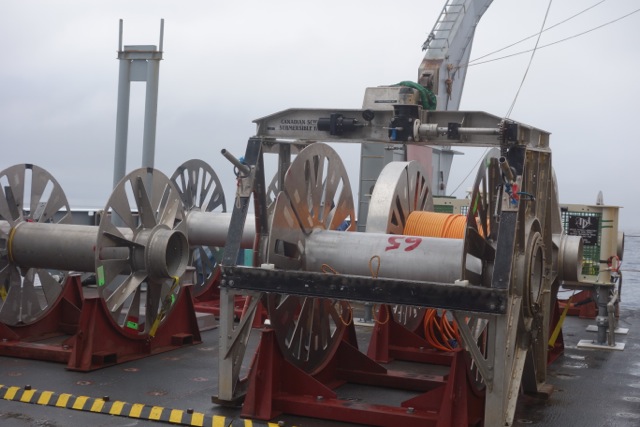
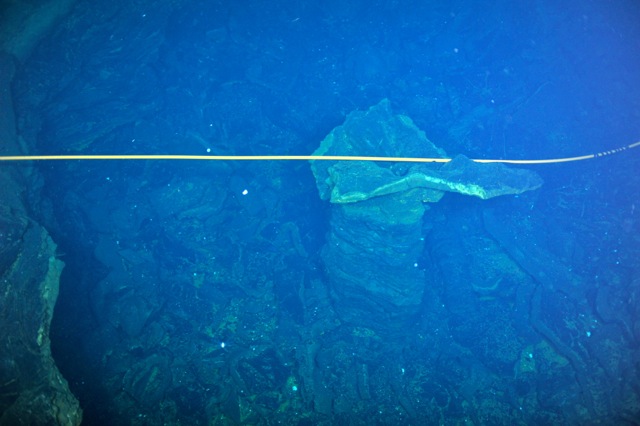

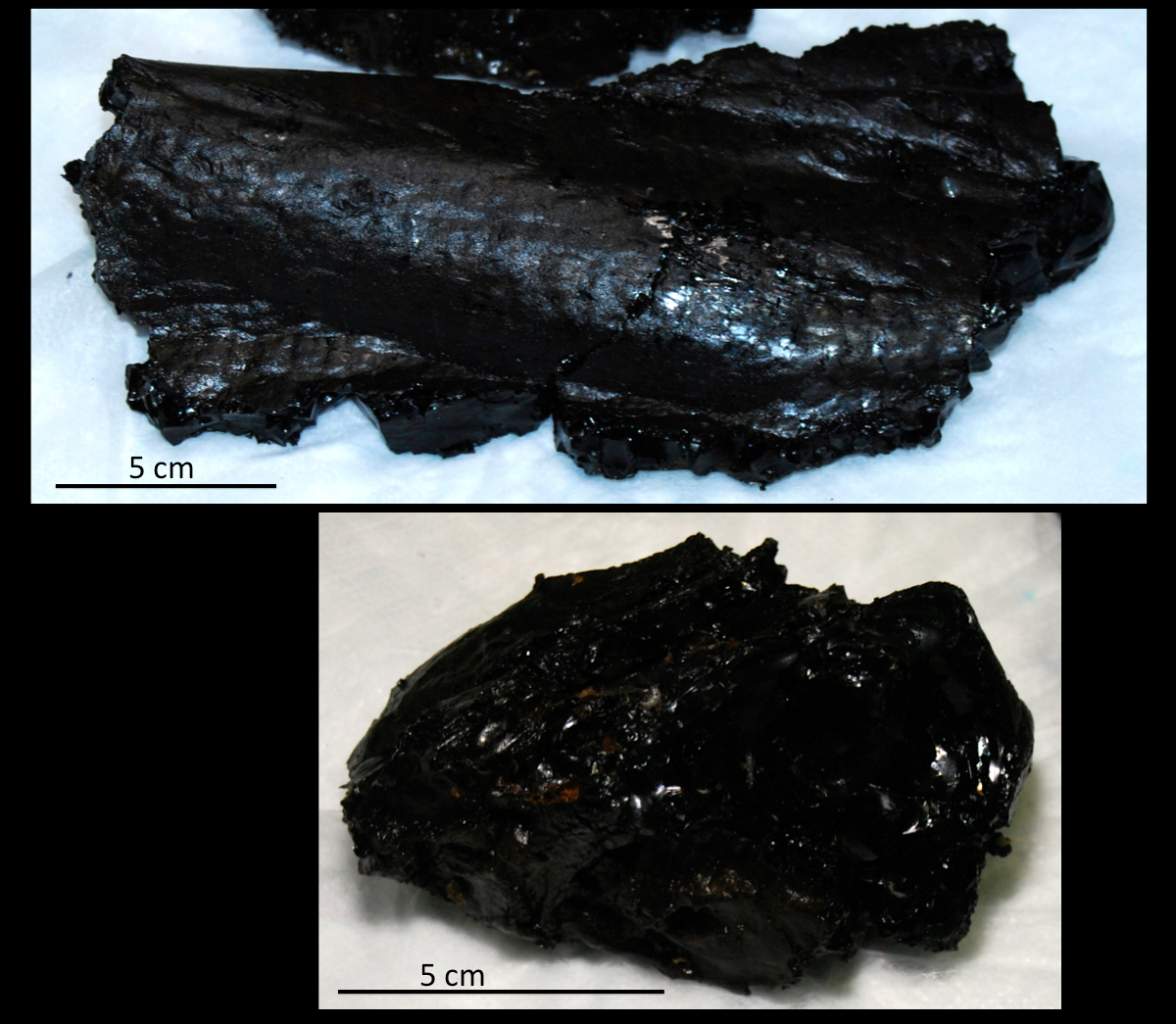





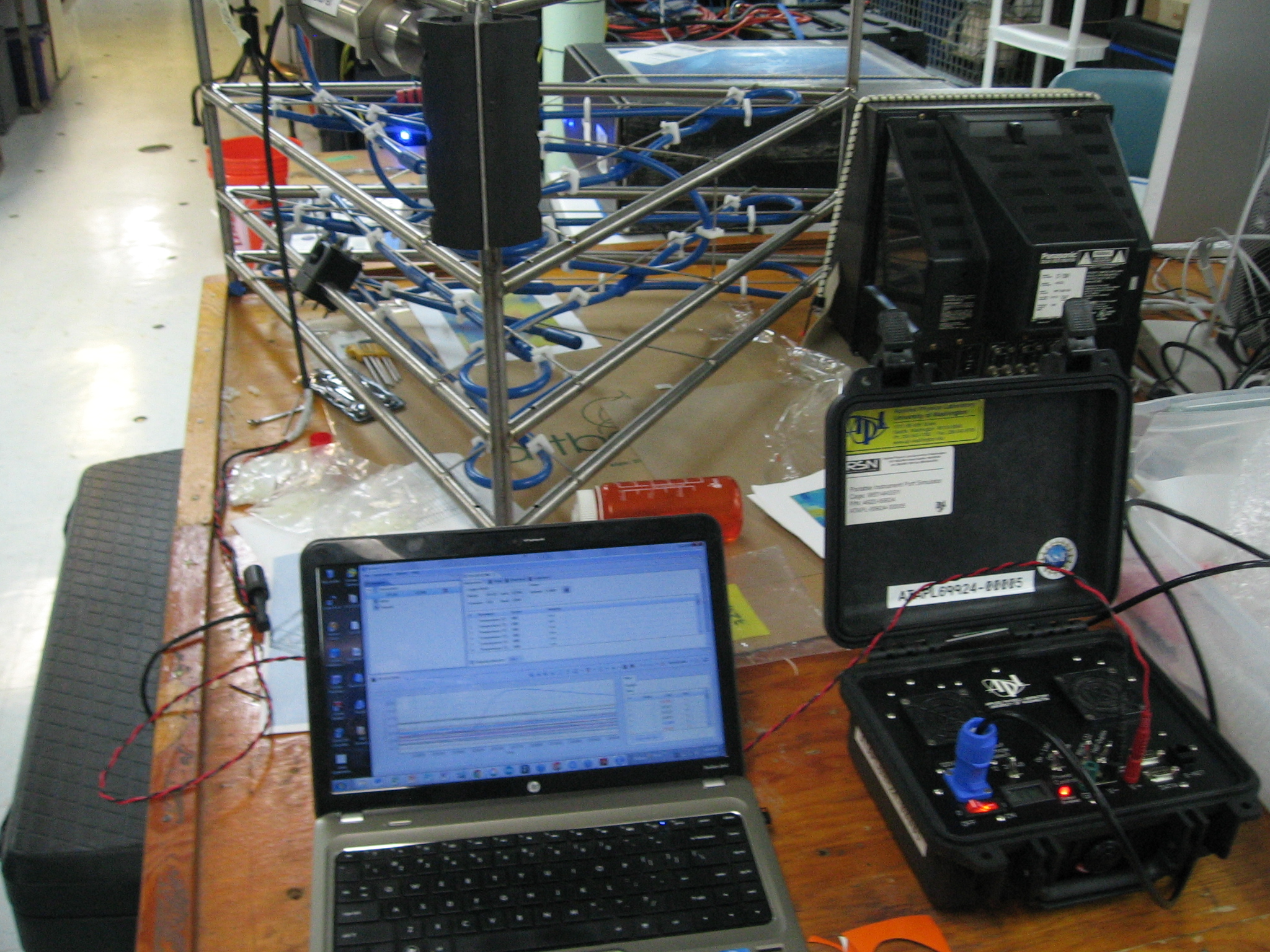

















John Delaney Leg 3 Poetry NIght, VISIONS '13. Photo by Ben Fundis

ROPOS Control Room VISIONS '13, Leg 3 Photo by Ryan Cox

Upon leaving Axial Seamount, only one cable reel remains on deck. Leg 3 Visions 13. Photo by Mary Miller.

Cable draped on pillar at Axial Seamount on leg 3, Visions 13. Photo credit: NSF-OOI/UW/CSSF

Giora Proskurowski planning a cable route on Axial Seamount during leg 3 during Visions 13.

Samples of fresh basalt were collected from Axial Seamount's caldera floor. When fresh, the outer surface of the rock is glassy due to the very rapid cooling and crystallization that occurs when the hot lava comes in contact with the 2oC seawater. This glass - known as obsidian - is very sharp and crumbles easily. (Photos by Leslie Sautter)

Iron-rich basalts quickly oxidize in the O2-rich atmosphere once on deck. (Photos by Leslie Sautter)

Sunset Photo by Fredrik Ryden

ROPOS collects vent chimney sample

Deep Sea Skate sketch, drawn by Montgomery Taylor, a College of Charleston undergraduate student who participated on Leg 3 of VISIONS '13.

The thermistor array will be deployed at the base of the hydrothermal vent Mushroom, on the lower right side of this image on top of the yellow incubators.

The thermistor array connected to the computer and power supply.

Live Visions 13 show with John Delaney and Mary Miller from the Exploratorium in the museum's Observatory Gallery on July 30, 2013.

axial_overview Credit: Fredrik Ryden

axial_firstpreson Credit: Fedrik Ryden

This 90 cm, ~100 lbs. chimney was collected from the base of the El Guapo sulfide chimney at the International District Hydrothermal Vent Field on Axial Seamount (ROPOS Dive 1617). (Photo by Leslie Sautter)

Students Brendan Philip and Montgomery Taylor use all their strength to position the chimney on the examination table. VISIONS '13, Leg 3 (Photo by Leslie Sautter)

This resistivity-temperature probe was deployed in the 270°C hydrothermal vent called 'Escargot' at the summit of Axial Volcano in 2013. Resistivity is an analoge for chlorinity or "saltiness' of the hydrothermal fluids. Boiling is common in these venting environments, governing gas concentrations, metal deposition, and perhaps life. A cabled version will be installed in 2014 providing real-time 24/7 data. ROPOS dive #1618, VISIONS '13, Leg 3. Photo credit: NSF-OOI/UW/CSSF.

This relatively small (<1 m) inactive chimney recently toppled over, becoming an excellent sample for collection. (ROPOS Dive #1617, VISIONS '13, Leg 3) Photo credit: OOI-NSF/UW/CSSF

Snail-shaped top of the Escargot hydrothermal vent sulfide structure in the Internationl District area. ROPOS Dive 1617, VISIONS '13, Leg 3. Photo credit NSF-OOI/UW/CSSF

Purple protists, ciliates, on hdyrothermal sulfide structure in the International District. White bacterial mats outline diffuse flow cracks. Credit: UW/NSF-OOI/CSSF; ROPOS DIve R1617; V13.

Students Brendan Philip and and Cody Turner work with Professor Julie Nelson in the computer lab. They are monitoring the temperature and salinity profiles created during the downcast of the CTD to determine the depths for triggering Niskin bottles for seawater collections. VISIONS '13, leg 3 (Photo by Leslie Sautter)

VISIONS '13 & Exploratorium interactive broadcast, July 28, 201 Mary Miller, Director of Public Understanding of Science at the Exploratorium in San Francisco, interviews VISIONS '13 Co-Chief Scientist Giora Proskurowski before an audience in the Wired Pier exhibit at the Exploratorium. Photo courtesy of the Exploratorium.

Eight students participated on both Legs 1 and 2. In the front row, from left: Adrian Rembold (2nd), Owen Coyle (5th), Claire Knox (6th), Julie Nelson (in pink), Judy Twedt (in blue), Julie Ann Koehlinger (in yellow), and Rick Berg (on the end). In the back row, from left: Brendan Philip (1st).

Several crabs dine on a jellyfish buffet on Axial Seamount. (VISIONS '13 Dive R-1615) Photo credit: OOI-NSF/UW/CSSF

Battery-operated thermistor array. VISIONS '13, Leg 3. Photo by Ryan Cox.

An at-sea tradition is to send styrofoam cups and wig-heads (usually embellished with stylistic artwork) down to the depths so that the overwhelming pressure in the deep sea compresses the objects into miniature versions. (Photo by Leslie Sautter)

Students on VISIONS '13 Leg 3 Left to right: Trevor Uptain, Ryan Cox, Fredrik Ryden, Cody Turner, Marisa Gedney, Montgomery Taylor, Isaac Stockdale, Brendan Philip, Owen Coyle, J.R. Rembert
- Anemone
- Animal
- Arthropod
- ASHES
- Axial
- Axial Base
- Axial Biology
- Axial Caldera
- Bacteria
- Basalt Lava
- BEP
- Biofouling
- biolgoy
- Biology
- Camds
- Camera
- Camhd
- Central Caldera
- Ciliates
- Cnidaria
- Coastal Biology
- Crab
- Deep Profiler Mooring
- Dive Highlights
- Eastern Caldera
- Echinoderms
- Endurance Array
- Engineering Team
- ENLIGHTEN 10
- Exploratorium
- Fish
- Geology
- HD Camera
- HPIES
- Hydrate Ridge
- Hydrates
- Hydrophone
- Hydrothermal Vents
- Illustration
- Inshore 80 Meters
- Instrument
- International District
- J-BOX
- Jason
- Jellyfish
- Junction Box
- K12
- Lava
- Mollusk
- Moorings
- Nodes
- Nudibranch
- Octopus
- OOI
- Oregon Offshore
- Oregon Offshore 600 m
- Oregon Shelf
- Oregon Slope Base
- People
- PN1B
- PN1D
- Polychaetes
- PPSDN
- Primary Node
- RASFL
- ROCLS
- ROPOS
- ROPOS Dives
- ROV Team
- RV Revelle
- RV Sikuliaq
- RV Thompson
- Salp
- Sample
- SC13
- Science Team
- Sea Cucumber
- Sea Star
- Sea Urchin
- Seafloor
- Seismometer
- Sensors
- Shallow Profiler Mooring
- Shark
- Shipboard
- Shore Station
- Slope Base
- Smoker
- Soft Coral
- Southern Hydrate Ridge
- Sponge
- Squid
- Students
- Students & Guest Participants
- Tmpsf
- Tubeworms
- VISIONS 11 Leg 1
- VISIONS 11 Leg 2
- VISIONS 11 Viewers
- VISIONS 13
- VISIONS 14
- VISIONS 15
- VISIONS 16
- VISIONS 17
- VISIONS 18
- VISIONS 20
- VISIONS 22
- VISIONS 23
- Visualization
